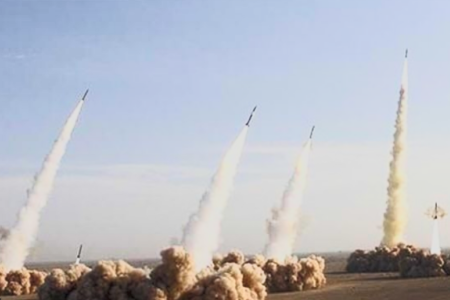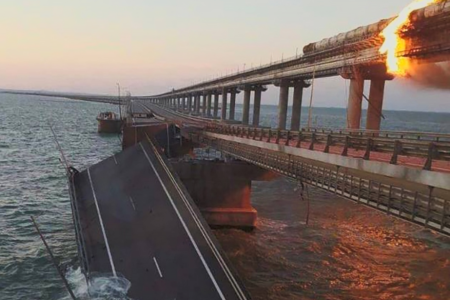Jeff Becker, a researcher and consultant in the field of defense, currently living in Virginia, the US, recently published an article entitled “How to prevent China from completing its takeover of the South China Sea.” The analysis was posted on the Australian Strategic Policy Institute (ASPI) website on July 21 and was recommended by RFI. Through this, the author has proposed a radical strategy to prevent China’s hegemonic ambition in the South China Sea (Vietnamese call it East Sea).
Mr. Becker has confirmed recently that China is stepping up its campaign to swallow the sea.

He highlighted the danger from the military outposts that China had built on the entities it had occupied in the South China Sea.
According to Jeff Becker, Beijing’s militarization of its occupied islands in the Hoang Sa (Paracels) and the Truong Sa (Spratlys) helped China greatly increase its ability to control other entities in the South China Sea. This advantage also allows Beijing to impose control over the entire sea and sky above in the future. So far, China has loudly opposed other countries exercising their right to harmless travel or other military activities within the 200-mile Exclusive Economic Zone (EEZ).
On the diplomatic level, Beijing has used the “divide and conquer” strategy in ASEAN, which is to try to impose the principle of bilateral negotiation with each disputing country so as to easily pressure that country with ways to entice, coerce, threaten, force countries to act in China’s interests, both to break the strength of intra-ASEAN solidarity in the search for a common policy.
Legally, China is determined not to acknowledge and comply with the 2016 ruling by the Permanent Court of Arbitration La Haye, which rejects the legitimacy of China’s “9-dash Line” sovereignty claim.
Beijing’s strategy is to build forces and facilities in the region so that in the long term it can impose sovereignty over the South China Sea.
Mr. Becker affirmed that the above China’s sovereignty ambition has never seen anywhere in the world, nor has it been seen in international law. This is a terrible scenario that military planners and world strategists must avoid.
The South China Sea is a vast and strategic ocean region. The South China Sea is one third wider than the Mediterranean Sea, and twice as large as the Gulf of Mexico.
Not only do countries that have sovereignty disputes directly in the South China Sea have strategic interests here, but also countries outside of the South China Sea have different interests in this important sea. The US, Australia, Japan, India and many other countries have a vital interest in using the waters for their economic, scientific and military purposes. A more urgent fact is the need to maintain the freedom of movement in the high seas and in the future, in the air to ensure the interests of all nations.
Recognizing China’s widespread sovereignty over such a large area would set a bad precedent, increasing the risk of the vast international maritime zones being occupied and controlled by individual countries.
According to researcher Jeff Becker, doing nothing is synonymous with giving China regular control of economic and military activities on this key sea.
The international community must make a choice at this time. One is to maintain open and protected maritime laws. The other is to let China seize the South China Sea, risking similar demands on all the world’s oceans.
To prevent that scenario, it is necessary to bring together as many countries as possible in order to have a tough and violent reaction to prevent China.
Becker calls on all countries to have an interest in maintaining a free and open South China Sea, so more radical measures are needed to prevent China from fulfilling its ploy.
The author comments that Washington has declared that Beijing’s claims to the South China Sea are illegal and has emphasized this claim by sending two aircraft carriers and escort groups into the area for demonstration is a good start.
But China has the “home turf” advantage in the region; therefore, the US and all its allies and partners in the international community should work together to deal with China in all other international waters.

The author proposes a concrete measure that the US, along with all its allies and partners, must publicly link China’s use of the world’s maritime waters to Beijing’s conduct in the South China Sea.

Specifically, the international community must begin to implement measures to strengthen administrative and technical restrictions on China’s shipping on the sea, in the air and in transit through exclusive economic zones of other countries participating in the joint common action.
Restrictions on the right to transit economic, military and scientific exploration must be planned in advance and easily adjusted to be commensurate with China’s actions in the South China Sea. Once international can do so, China will face many difficulties, will see the extremely high prices, the complex difficulties to access the Indo-Pacific region and other places.
Mr. Becker gave an example: If Japan and the Philippines together with the US apply restrictive access measures, China could not have a direct way to the Western Pacific. This measure should be notified to China, if Beijing uses its power to impose sovereignty and control over the South China Sea.
Restricting China’s right to go through the exclusive economic zones of other countries must be accompanied by the assurance that these areas are still open to the participating countries. Moreover, the measures against China will have to be flexible and can be easily removed when China reconsider its actions in the South China Sea.
However, he noted that ensuring the highest level of freedom of access to the world’s seas is the ultimate goal of this international effort.
According to him, even though the strategy of responding to China’s most aggressive intent in the South China Sea seems very aggressive, the countries and the will of the world should be ready to shock, forcing China to weigh to remind of the dangers of limiting the freedom of navigation in the South China Sea and the freedom to use the world’s common seas.
Even when the world is struggling with a pandemic starting in China, the country is constantly promoting illegal acts in the South China Sea.
Photo 5: Satellite imagery of April 17 and June 25 showing China’s dredging activities on Woody (Phu Lam) Island
The satellite image of commerce from April 17 to June 25 showed that China brought heavy machinery to the northwestern coast of Phu Lam Island to dredge and replenish, according to Benarnews.
China’s artificial island acclamation campaign has been widespread since 2014 to 2016 in the South China Sea, destroying the natural environment and militarizing the reefs and reefs it occupies.
The four largest bases China maintains in the South China Sea – Subi Rock, Cross Stone, Mischief Reef and Phu Lam Island – are virtually imperceptible since the accretion ended in 2017, creating deep water harbor, runways, and living areas. But small-scale dredging continues, as this latest satellite image shows.
Not stopping there, China has continued to take more actions to impose control over the South China Sea such as military exercises in the Paracels, the most recent was on July 15-17; dispatching survey ships to Spratlys or continually sending maritime vessels to harass Vietnamese oil and gas fields.
Photo 6: 4 fighter may be J-11 of China illegally deployed on Phu Lam Island in Hoang Sa archipelago of Vietnam
Satellite images from July 15 show that at least four fighters have appeared in Woody. The move comes two days after US Secretary of State Mike Pompeo stated that Beijing’s claims to offshore resources in most of the South China Sea are “completely illegal.”
Beijing has always been opposed to the operation of foreign companies in disputed waters in the South China Sea and Vietnam is China’s latest victim. China’s Hai Duong 8 probe returned to Vietnam’s EEZ in mid-June in an attempt to threaten Vietnam over its cooperation in oil production in the South China Sea with an international partner. Then in July, the China Coast Guard (CCG) 5402 vessel entered Lan Do gas field area in Block 06-01 to monitor the rig’s operation at the Lan Tay gas field. Four days later, it was announced that Noble Clyde Boudreaux’s contract with Vietnam had been canceled.
Thoibao.de (Translated)




























